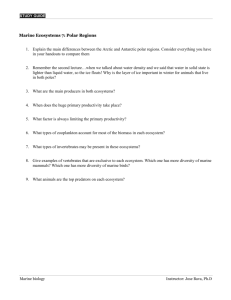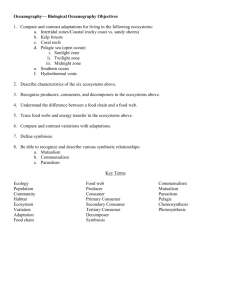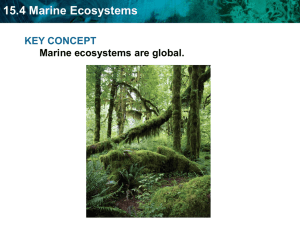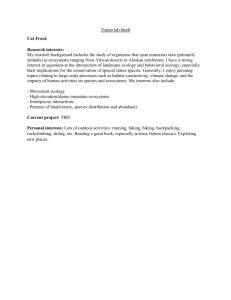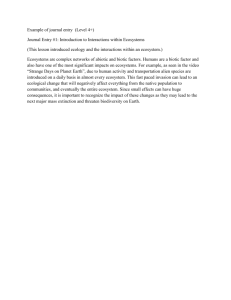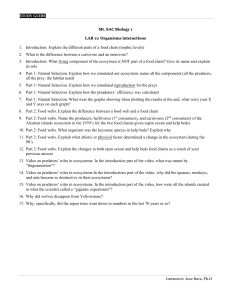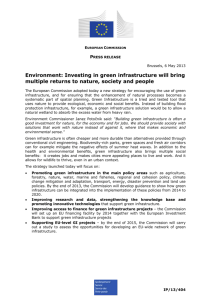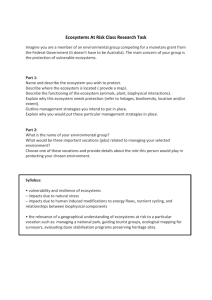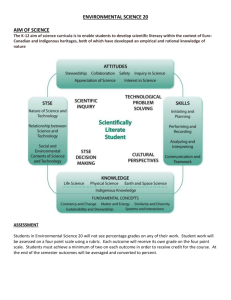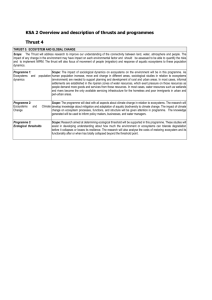BLS 390
advertisement
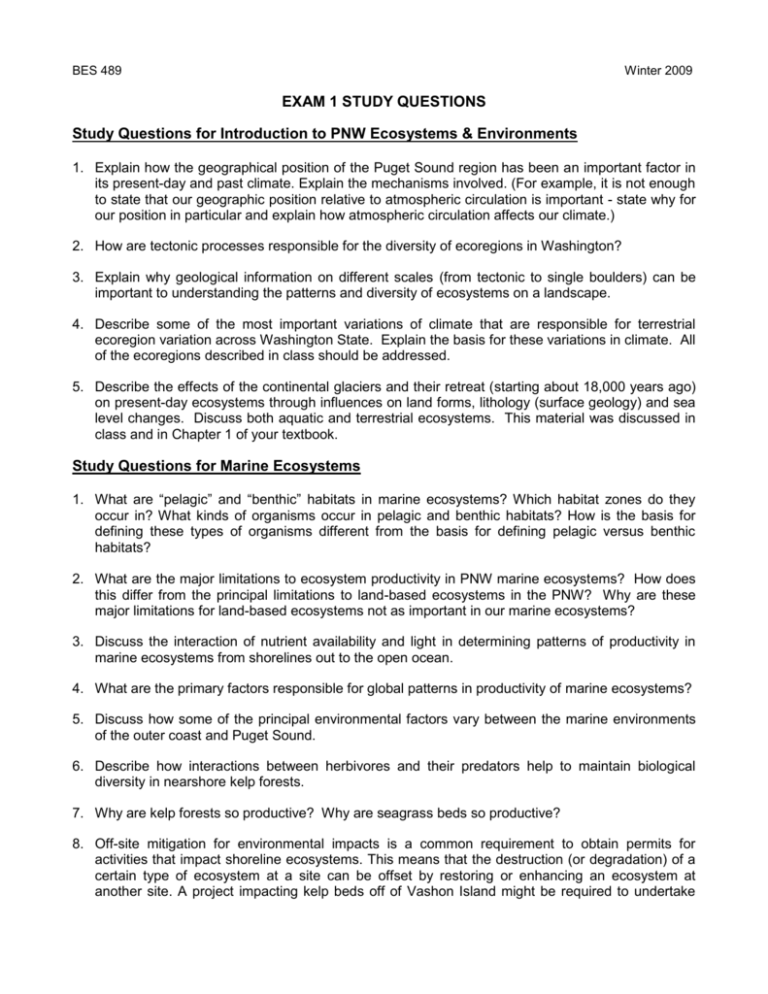
BES 489 Winter 2009 EXAM 1 STUDY QUESTIONS Study Questions for Introduction to PNW Ecosystems & Environments 1. Explain how the geographical position of the Puget Sound region has been an important factor in its present-day and past climate. Explain the mechanisms involved. (For example, it is not enough to state that our geographic position relative to atmospheric circulation is important - state why for our position in particular and explain how atmospheric circulation affects our climate.) 2. How are tectonic processes responsible for the diversity of ecoregions in Washington? 3. Explain why geological information on different scales (from tectonic to single boulders) can be important to understanding the patterns and diversity of ecosystems on a landscape. 4. Describe some of the most important variations of climate that are responsible for terrestrial ecoregion variation across Washington State. Explain the basis for these variations in climate. All of the ecoregions described in class should be addressed. 5. Describe the effects of the continental glaciers and their retreat (starting about 18,000 years ago) on present-day ecosystems through influences on land forms, lithology (surface geology) and sea level changes. Discuss both aquatic and terrestrial ecosystems. This material was discussed in class and in Chapter 1 of your textbook. Study Questions for Marine Ecosystems 1. What are “pelagic” and “benthic” habitats in marine ecosystems? Which habitat zones do they occur in? What kinds of organisms occur in pelagic and benthic habitats? How is the basis for defining these types of organisms different from the basis for defining pelagic versus benthic habitats? 2. What are the major limitations to ecosystem productivity in PNW marine ecosystems? How does this differ from the principal limitations to land-based ecosystems in the PNW? Why are these major limitations for land-based ecosystems not as important in our marine ecosystems? 3. Discuss the interaction of nutrient availability and light in determining patterns of productivity in marine ecosystems from shorelines out to the open ocean. 4. What are the primary factors responsible for global patterns in productivity of marine ecosystems? 5. Discuss how some of the principal environmental factors vary between the marine environments of the outer coast and Puget Sound. 6. Describe how interactions between herbivores and their predators help to maintain biological diversity in nearshore kelp forests. 7. Why are kelp forests so productive? Why are seagrass beds so productive? 8. Off-site mitigation for environmental impacts is a common requirement to obtain permits for activities that impact shoreline ecosystems. This means that the destruction (or degradation) of a certain type of ecosystem at a site can be offset by restoring or enhancing an ecosystem at another site. A project impacting kelp beds off of Vashon Island might be required to undertake restoration of a kelp bed near Port Angeles (in the Strait of Juan de Fuca). Comment upon this approach given what you know about kelp beds. 9. What is “top-down” control in a trophic system? Explain how that works using the kelp bed example from class. How do these trophic relationships impact / maintain the diversity of kelp beds? 10. What are “ecological engineers”? Provide examples from kelp beds and eelgrass beds. 11. What causes such distinct zonation in our rocky intertidal ecosystems? Why do salt marshes lack such zonation? What is an example of how human alteration of a salt marsh actually leads to distinct zonation (and how does the alteration create conditions similar to the rocky intertidal that lead to zonation)? 12. What are the major abiotic environmental factors that organisms cope with in intertidal ecosystems? Explain some adaptations used to deal with these environmental stresses. 13. Why is the presence of logs washed up into a salt marsh important for species diversity in that marsh ecosystem? 14. Explain the importance of topographic heterogeneity and predators in maintaining biological diversity and the nature of communities in our intertidal ecosystems. 15. Why are biological interactions more important in defining the lower boundaries of organisms’ ranges in the intertidal while abiotic factors are more often responsible for limiting how far up they occur? Would you expect this to be the case in a variety of other terrestrial ecosystems – that the lower elevation boundaries of an organism’s range would typically be set by biological interactions, but how far up in elevation in occurs would be set by abiotic constraints? 16. Which human impacts on Puget Sound marine ecosystems are the most difficult to reverse (or lessen)? Why?
